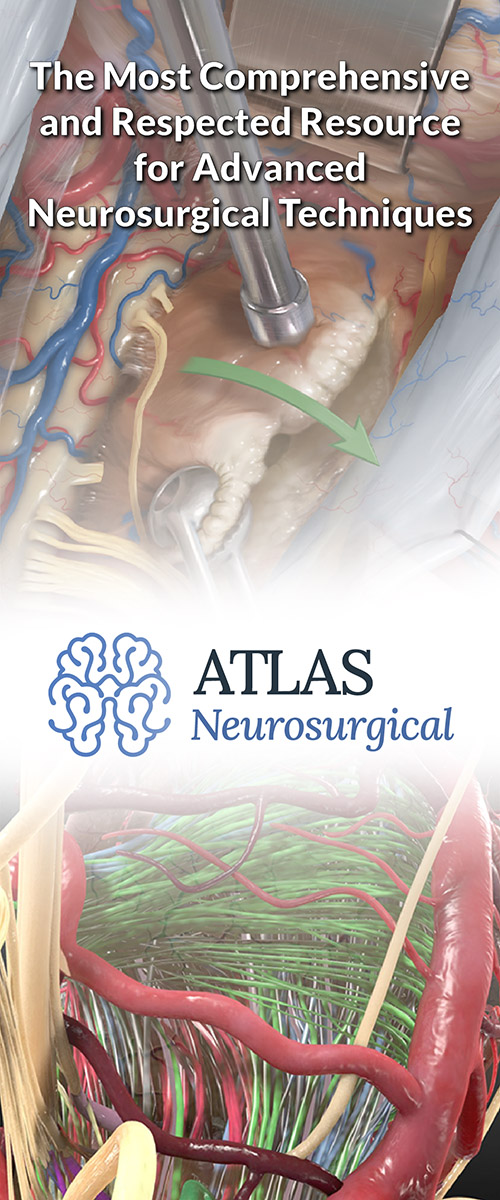Radiation Therapy for Hemifacial Spasm
Hemifacial spasm (HFS) is a cranial nerve hyperactivity disorder that causes involuntary contractions of the facial muscles on one side of the face. These spasms are most often caused by compression of the facial nerve by a blood vessel. The facial spasms will typically begin around the eye and eventually affect other facial muscles on the same side.
Although hemifacial spasm is not life-threatening or painful, it is a frustrating condition that can affect many aspects of life. Cosmetic changes from the spasms can interfere with social interactions and cause public embarrassment, leading to stress and anxiety that can further exacerbate symptoms.
How Do I Get Rid of Hemifacial Spasms?
Some cases of hemifacial spasm resolve on their own or go into a period of remission after several months or years. However, in most cases the spasms will persist or worsen over time. Fortunately, hemifacial spasm is a treatable condition. More than 85% of patients experience a lasting cure and relief of symptoms after microvascular decompression surgery.
However, not all patients are good candidates for surgery. In such rare cases, medications such as onabotulinumtoxinA (Botox, Allergan Aesthetics, Irvine, CA), anticonvulsants, or muscle relaxants may be prescribed. If hemifacial spasms are still severe and significantly interfere with your life, radiation therapy may be attempted.
What Is Radiation Therapy?
Radiation therapy uses high-energy beams to target and eventually injure cells in a specified location.
Why should you have your surgery with Dr. Cohen?
Dr. Cohen
- 7,000+ specialized surgeries performed by your chosen surgeon
- More personalized care
- Extensive experience = higher success rate and quicker recovery times
Major Health Centers
- No control over choosing the surgeon caring for you
- One-size-fits-all care
- Less specialization
For more reasons, please click here.
Radiation Therapy for Hemifacial Spasms
The use of radiation therapy for hemifacial spasm is relatively uncommon. However, radiation therapy may be considered for patients with hemifacial spasm resistant to other treatment options, for individuals who cannot undergo surgery, or to control the growth of a benign tumor pressing against the facial nerve. Below are several uses of radiation therapy for hemifacial spasm.
Intentional Damage to the Facial Nerve
Radiosurgery and fractionated radiation therapy have been performed for cases of hemifacial spasm with the goal being to damage the facial nerve enough to prevent the nerve from firing and causing facial contractions. Outcome data are currently limited to a small number of patients, although most experienced gradual reduction of spasm symptoms within weeks to months of the procedure. Because of the relatively short follow-up times, recurrence rates are unclear.
Control of Benign Brain Tumors
Although facial nerve compression from a blood vessel is often what leads to hemifacial spasm, a tumor impinging on the facial nerve is another possible cause. For tumors that are benign and slow growing, surgery may not be necessary. In such cases, a less invasive treatment option such as radiosurgery may be used to shrink the tumor enough to alleviate symptoms of hemifacial spasm.
Although radiation therapy is an established treatment option for other compressive nerve disorders such as trigeminal neuralgia, it is not widely used in the management of hemifacial spasm. Therefore, evidence on its efficacy, recurrence rates, and complications is limited. It will be important to discuss the potential risks and benefits of radiation therapy with your neurosurgeon to determine if this is right for you.
Types of Radiation Therapy
Radiation therapy can be delivered as a small dose in multiple short sessions (fractionated radiotherapy) or as a large dose in a single, longer session (stereotactic radiosurgery). The word “stereotactic” is used to describe image-guidance techniques that allow for accurate positioning of radiation beams to a target location within the body. The name “radiosurgery” comes from its highly precise targeting nature, although it is not actual surgery. Stereotactic radiosurgery is delivered through 3 different types of systems:
- Gamma Knife: Gamma Knife uses beams of gamma rays (photons) to target the facial nerve or the offending tumor. The individual beams converge at the target location to provide a high dose of radiation.
- Linear accelerator-based systems (e.g., CyberKnife, Novalis): Linear accelerator (LINAC) systems focus x-ray beams (photons). These systems have the unique ability to move around the patient, allowing for different angles to best approach the target and minimize radiation to the surrounding tissues.
- Heavy charged particles (e.g., proton beam): Heavy charged particle therapy focuses particles (protons) at a specific target. In comparison with photons used in other forms of stereotactic radiosurgery, protons can focus most of their energy on the target location and minimize radiation exposure to nearby areas. This is a relatively new form of stereotactic radiosurgery found only at specialized centers across the world.
What Are the Risks and Side Effects of Radiation Therapy?
Possible side effects with radiation therapy for hemifacial spasm include facial numbness or weakness, hearing loss, headache, fatigue, hoarseness, or impaired coordination. When the target location is small and far from other critical structures, the risk of side effects and complications is generally low.
What Does Stereotactic Radiosurgery Entail?
A stereotactic radiosurgery session to treat hemifacial spasm will likely entail the following steps. The entire process may take up your entire morning or afternoon, but the actual treatment duration may only be 1 or 2 hours. Most patients go home the same day.
- Preparation: A head frame is attached to the scalp and skull with special pins that penetrate the skull by a few millimeters to immobilize your head during the procedure.
- Imaging tests: A magnetic resonance imaging (MRI) scan will be ordered to determine the location of the nerve or tumor and plan the trajectory of radiation.
- Treatment: You will be placed under the radiation machine headfirst. The delivery of radiation is painless and may take 1 or 2 hours.
- Recovery: The head frame is removed. You may experience minor bleeding and tenderness at the pin sites. Additional radiosurgery sessions may be ordered, although usually only one session is required.
Treatment for Similar Conditions
A similar but ultimately different disorder from hemifacial spasms is facial myokymia. In contrast to the obvious intermittent contractions of hemifacial spasms, facial myokymia presents with subtle continuous contractions of the facial muscles that may involve multiple parts of the face.
These twitches can appear like waves of flickering or worm-like movements under the skin that are sometimes not apparent until examined closely. In contrast to hemifacial spasms, facial myokymia more often resolves on its own after a few weeks to months. Facial myokymia treatment often involves Botox injections if persistent or severe.
Key Takeaways
- Radiation therapy is a non-invasive treatment option for hemifacial spasm that may be considered in certain very rare cases.
- Currently, radiation therapy is not widely used in the management of hemifacial spasm.
- Surgery remains the only option for cure of hemifacial spasm.
- Data on efficacy, recurrence, and complications of radiation therapy for hemifacial spasm are limited to small case reports and case series.




